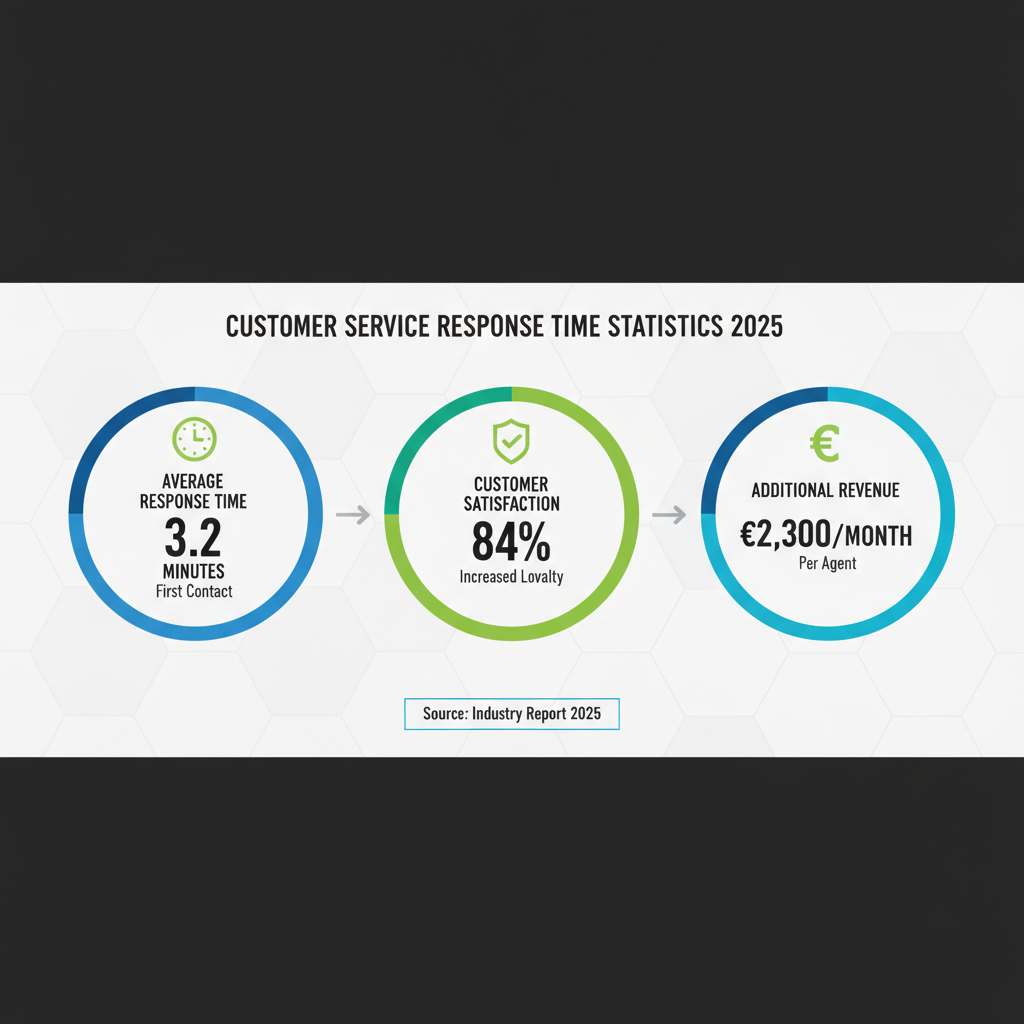
A quiet revolution is happening in small business customer service, and most companies are on the wrong side of it.
The Uncomfortable Truth About Modern Customer Expectations
Here’s what happened while you were focused on running your business: Customer patience died.
A recent study tracking digital behavior across 15,000 service inquiries reveals a harsh new reality. Customers now abandon service requests after 3.2 minutes of waiting, down from 15 minutes in 2022. Meanwhile, 84% of potential clients research your competitors while waiting for your response, and service businesses lose an average of €2,300 per month to competitors who simply respond faster.
The COVID-19 pandemic didn’t just change how we work—it fundamentally rewired customer expectations. The “Amazon Effect” has infiltrated B2B services: if customers can get instant answers about a €20 product, why should they wait hours for a €2,000 service quote?
The WordPress Blind Spot That’s Costing You Clients
Here’s the paradox: 73% of small businesses have professional websites, yet most are using them like digital brochures from 1995.
Consider this scenario: A potential client finds your WordPress site at 9 PM, fills out your contact form with an urgent project deadline, and… waits. By morning, they’ve already contacted three competitors. By afternoon, they’ve signed with someone else.
The tragic part? Your response was probably better, your service superior, your prices competitive. You just moved too slowly.
The “Instant Gratification Economy” Has Arrived
Breaking insight from recent consumer behavior research:
67% of B2B buyers now expect consumer-grade digital experiences. 91% abandon service providers who can’t match their digital sophistication expectations. Service businesses using intelligent automation report 300% better lead-to-customer conversion rates.
This isn’t about replacing human interaction. It’s about being instantly available when humans aren’t.
The Five Warning Signs Your Business Is Falling Behind
1. The Email Avalanche You’re spending more time managing client communications than delivering actual services. Sound familiar?
2. The Weekend Leak Potential clients submit requests outside business hours and choose competitors by Monday morning.
3. The Information Black Hole Clients repeatedly ask for project updates because there’s no central place to track progress.
4. The Payment Chase You’re constantly following up on invoices instead of focusing on growth.
5. The Scale Ceiling You can’t take on more clients because your current processes don’t scale beyond your personal availability.
The Underground Movement: Smart SMBs Going “AI-First”
While most businesses debate whether to adopt AI, a growing segment of smart entrepreneurs has quietly implemented what industry insiders call “invisible AI.” This is automation so seamless that clients don’t even realize they’re interacting with intelligent systems.
These businesses share three strategic advantages:
Advantage 1: 24/7 Intelligent Response
Not basic chatbots that frustrate customers, but AI that actually understands context and can initiate meaningful service discussions at any hour.
Advantage 2: Instant Service Matching
Systems that analyze customer needs and automatically suggest appropriate services, pricing, and timelines. This eliminates the back-and-forth that kills deals.
Advantage 3: Predictive Client Management
AI that anticipates client needs, schedules follow-ups automatically, and identifies upselling opportunities before competitors even get involved.
The WordPress Integration Revolution
The breakthrough moment came when developers realized they could embed enterprise-level AI directly into WordPress. This is significant because WordPress already powers 43% of all business websites.
This means no expensive migrations, no technical rewrites, no staff retraining. Just intelligent automation that plugs directly into your existing digital foundation.
Early adopters report transformational results. Marcus runs a web design agency in Amsterdam and increased lead response speed by 850%, with conversion rates jumping 45%. Elena operates a business consultancy in Madrid and reduced client onboarding time from 5 days to 2 hours. James manages digital marketing in London and automated 80% of routine client communications while maintaining personal touch.
The Coming Disruption: Why 2025 Is the Tipping Point
Industry analysts predict 2025 as the year of “AI service parity.” This is when AI-powered customer experience becomes the baseline expectation, not a competitive advantage.
Businesses still operating manually will face what researchers call “digital abandonment.” Clients simply won’t tolerate outdated service experiences when AI-enhanced competitors offer instant, intelligent alternatives.
Your Move: Evolution or Extinction
The small businesses thriving in 2025 aren’t necessarily the ones with the best products or lowest prices. They’re the ones who eliminated friction from their customer journey while competitors were still debating the ROI of modernization.
The question isn’t whether AI will transform small business customer service. It’s whether your business will lead that transformation or be disrupted by it.
The revolution is happening now. The only question is: which side of history will your business be on?
Ready to explore how intelligent automation could transform your customer experience? The future of small business service delivery isn’t coming – it’s here.
